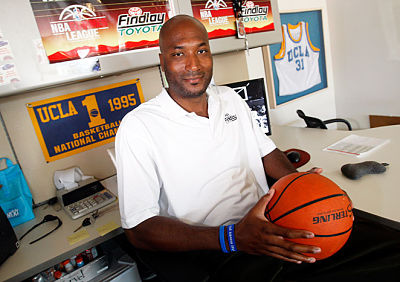Last week, I published this op-ed in the Fort Worth Star-Telegram. I wanted to share it here too because I believe it is important for understanding how the history of intercollegiate athletics plays a part in today’s challenges.

In a courtroom in Oakland, Calif., this week, current and former college athletes finally are getting their day in court.
The athletes are suing the NCAA for a share of the profits made from television contracts to broadcast intercollegiate athletics. The athletes contend that the NCAA made millions of dollars off of them while not properly compensating them.
The NCAA counters that the athletes are amateurs and also received a college education including tuition, room and board.
While the case is important to the future direction of intercollegiate athletics and may well be ultimately decided by the Supreme Court, the case and the arguments surrounding it often fail to consider the unique history of universities and athletics.
Since the earliest beginnings, intercollegiate athletics — and especially football — developed outside of the control of faculty and presidents. The teams were student organizations. Student associations paid for expenses and managed all of the logistics.
Creating athletics programs outside of the traditional structure of the university required coaches, athletic directors and other staff supported from the power and money of student fees and alumni associations.
Newspapers covered the games, and the resulting popularity fueled a booming sports media landscape decades before ESPN would exist.
In 1892, the newly founded University of Chicago hired Amos Alonzo Stagg, who served as head football coach and athletic director for 40 years. He was Mack Brown, Bob Stoops and Nick Saban all rolled into one.
Knowing Chicago’s president believed athletics would help the new university grow, he negotiated an unbelievable contract.
His budget was exempt from usual internal reviews. Stagg held faculty and administrative appointments. He was able to profit from side ventures that took advantage of his prominence.
To top it all off, he won. A lot.
Stagg built the University of Chicago into a national powerhouse. Other universities sought to replicate the model that seemingly was working so well.
This created what noted education historian John Thelin has called the “permanent fixture of the football coach and athletic director as public celebrities and campus czars.”
With the exception of some player safety reforms in the early 1900s, intercollegiate athletics has grown virtually unchecked since the days of Coach Stagg. There have been attempts at reforms, but with little to no substantial changes resulting.
Many suggest universities are unable to change. This may be true. However, they have also shown an unwillingness to change.
Despite the enormous revenue generated, only 23 of 228 athletics departments at Division I public universities break even. Expenses far exceed revenue and often the academic side of the university has to cover these deficits.
University administrators understand the extreme costs of running a high-profile athletic program. University trustees and presidents believe that the benefits of athletics outweigh the costs.
If we want to reform intercollegiate athletics, we have to start with the universities themselves.
Trustees must care more about teaching and research than wins on Saturday afternoon. Legislators must care more about the benefits of a university’s teaching, research and service missions than success in March Madness.
Estimates are that between $60-70 billion is wagered on college football. No matter the odds, few would bet on meaningful reform of intercollegiate athletics.

